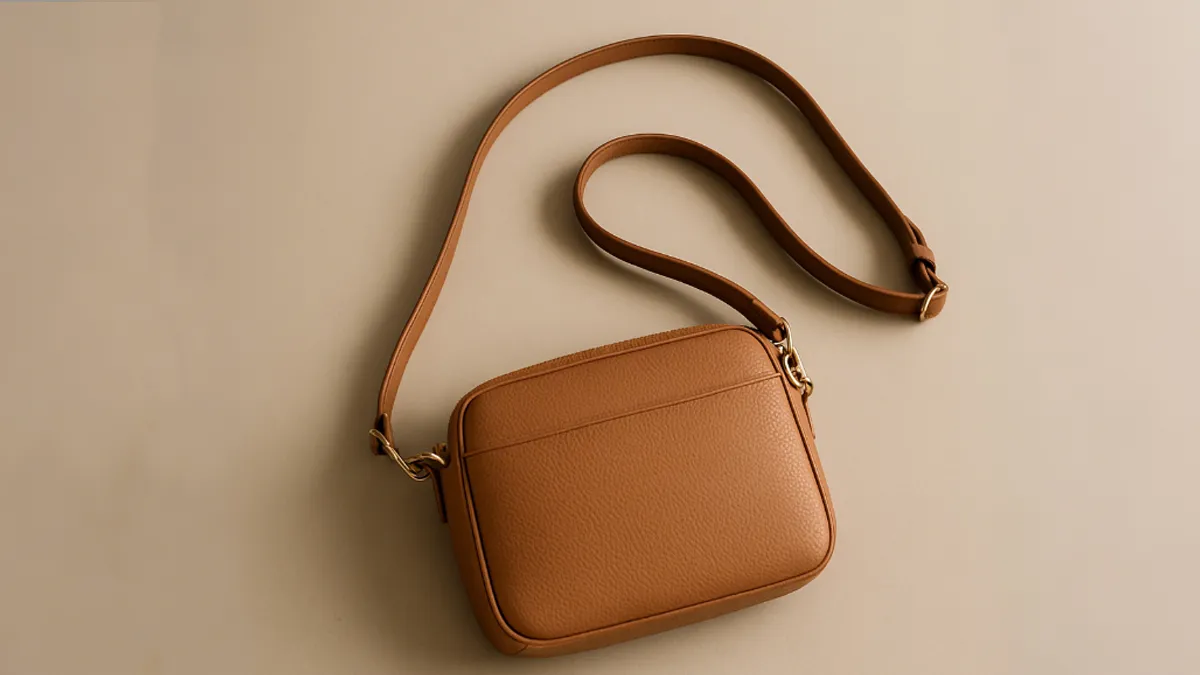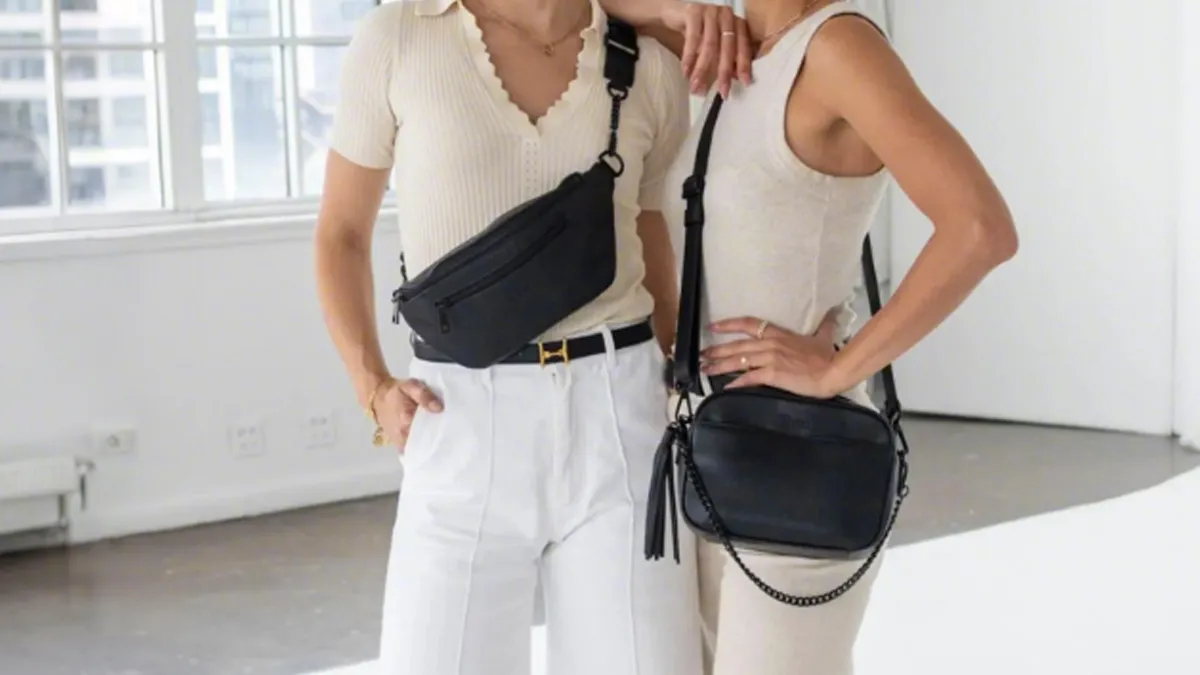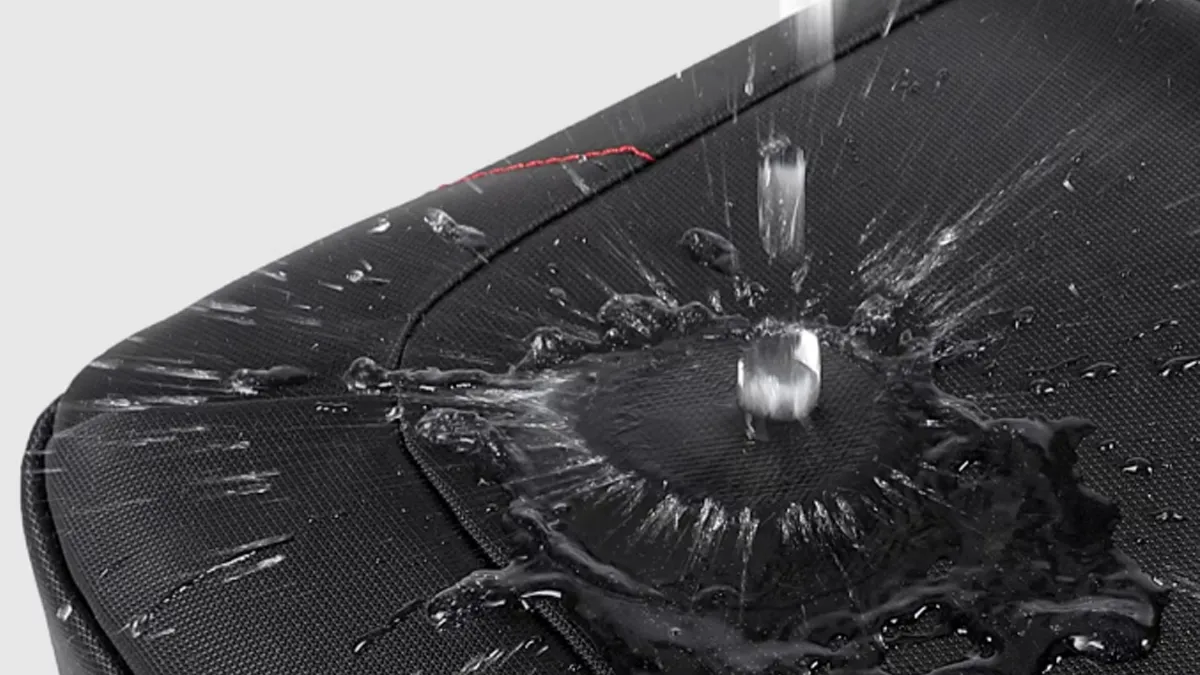How to choose crossbody bag is a question many shoppers ask when they want something practical but stylish. A crossbody bag is more than just an accessory—it affects how comfortable you feel, how much you can carry, and even how secure your belongings are. Picking the right one makes daily life, travel, or work much easier.

The good news is that choosing a crossbody bag does not have to be complicated. You only need to focus on a few key things: size, material, strap design, security, and how it matches your lifestyle. In this guide, we will walk step by step through everything you need to know so you can find a crossbody bag that fits you perfectly.
Understanding Crossbody Bags
A crossbody bag is designed with a long strap that goes across your body, leaving your hands free and your belongings close to you. That simple design makes it one of the easiest bags to use in daily life. Unlike a tote that keeps slipping off your shoulder or a backpack that feels bulky and hard to access, a crossbody sits comfortably and gives you quick access to what you need. It feels secure without being heavy or awkward.

One reason crossbody bags are so popular is that they fit into almost every lifestyle. Students like them for carrying just the essentials between classes, professionals use them for commuting because they look polished without being formal, and travelers rely on them since the design makes pickpocketing harder. Even fashion lovers enjoy them because a well-chosen crossbody can add personality to any outfit. That mix of function and style explains why they have become a go-to choice for so many people.
Quick comparison:
- Crossbody vs Shoulder Bag
Shoulder bags may look stylish, but they tend to slip off easily, especially when you are walking or moving around a lot. A crossbody bag stays in place because the strap goes across your body, which makes it feel more secure and less distracting. - Crossbody vs Tote
Tote bags are roomy and great for carrying more items, but once they get heavy, all the weight falls on one shoulder. A crossbody bag spreads the weight more evenly, so it feels lighter and more comfortable over long periods of time. - Crossbody vs Backpack
Backpacks can carry bigger loads, but they are not always convenient. You usually need to take them off to grab something, which can be a hassle. A crossbody bag is easier to access on the go, while still keeping your essentials close and safe.
Step 1: Decide the Purpose
The first step in figuring out how to choose crossbody bag is to think about when and where you will actually use it. The purpose of the bag will guide the size, material, and even the little details you should look for.

- Daily Commuting
For work, school, or running everyday errands, a medium-sized crossbody is usually the best fit. It has enough room for your wallet, phone, keys, and even a small notebook or tablet without feeling bulky. Neutral colors like black, grey, or tan work well because they match almost any outfit, whether you are in office wear or casual clothes. - Travel and Vacation
If you are traveling, comfort and safety come first. A lightweight nylon or polyester crossbody is a smart choice because it is durable, water-resistant, and easy to carry all day. Many travel crossbody bags also come with anti-theft zippers, hidden pockets, and adjustable straps so you can keep your belongings secure while sightseeing or moving through crowded airports. - Work and Meetings
When you want something more professional, a larger crossbody made from leather or PU gives a polished look. These bags are structured enough to hold documents, a tablet, or small work essentials. Just be careful not to go too big, since oversized bags can feel heavy on one shoulder and take away the clean, professional vibe. - Concerts or Stadiums
For events like concerts and sports games, most venues require clear bags. A clear PVC crossbody is perfect for this since it meets stadium-approved size limits, usually weighs less than one pound, and gets you through security checks quickly. They are practical, lightweight, and let you enjoy the event without worrying about bag restrictions.
Step 2: Pick the Right Size
Size is one of the most important things to think about when you are learning how to choose crossbody bag. If the bag is too small, it will not fit what you need, and if it is too big, it can quickly become heavy and uncomfortable to carry. The right size really depends on your lifestyle and what you plan to put inside.
- Mini Crossbody Bags
Mini crossbody bags usually weigh less than 1 pound when empty. They are perfect if you only need the basics—like your phone, wallet, and keys. They are a great choice for concerts, evenings out, or quick errands when you do not want to carry much. The small size makes them feel light and easy, plus they look stylish without getting in the way. - Medium Crossbody Bags
Medium crossbody bags are the most versatile. They usually weigh around 1 to 1.5 pounds when empty and give you just enough space for everyday essentials. You can fit a phone, wallet, makeup, charger, and even a small tablet. They work well for commuting, shopping, or short trips because they balance storage and comfort—you can carry more without the bag feeling too heavy. - Large Crossbody Bags
Large crossbody bags weigh about 1.5 to 2 pounds or more when empty. They are designed for work, travel, or times when you need to carry extra items like notebooks, a tablet, or even a water bottle. The bigger size makes them practical, but keep in mind they can get heavy after a while. They are best if you need function first and do not mind a bit of extra weight on your shoulder.
| Size | Empty Weight | Best Use Case |
|---|---|---|
| Mini | 0.5–1 lb | Concerts, nights out, minimal carry |
| Medium | 1–1.5 lb | Daily commute, shopping, light travel |
| Large | 1.5–2+ lb | Work, business, longer trips |
Step 3: Choose the Material
Material affects both weight and durability.
- Leather: Stylish and durable, but heavier. A medium leather crossbody may weigh 1.5 lb or more empty.
- Canvas / Cotton: Casual and lightweight. Usually under 1 lb, easy to carry all day.
- Nylon / Polyester: Popular for travel. Strong, water-resistant, and light.
- Clear PVC: Required in stadiums and concerts. Lightweight, usually 0.5–0.8 lb.
- Sustainable Fabrics: Recycled PET or organic cotton. Lightweight like canvas but eco-friendly.
| Material | Average Weight | Strengths | Best For |
|---|---|---|---|
| Leather | 1.5–2 lb | Durable, stylish | Work, business |
| Canvas | 0.8–1 lb | Light, casual | Everyday use |
| Nylon | 0.6–1 lb | Water-resistant, durable | Travel, sports |
| PVC (Clear) | 0.5–0.8 lb | Stadium-approved, secure | Concerts, events |
| Eco Fabrics | 0.8–1 lb | Sustainable, light | Eco-conscious shoppers |
Step 4: Strap Length and Comfort
Straps play a huge role in how a crossbody bag feels when you wear it. Even if the bag itself is on the heavier side, the right strap can make it feel more comfortable and easier to carry.
- Adjustable Straps
An adjustable strap is a must-have feature. It lets you raise or lower the bag depending on your height and comfort. If you are wearing a coat in winter, you might want it a little longer. On a summer day with a light outfit, you may prefer it shorter. That flexibility makes a big difference. - Wide vs Narrow
The width of the strap also changes the comfort level. Wide straps spread the pressure across your shoulder, so they are much more comfortable for long wear. Narrow straps may look sleek, but they can dig into your shoulder if the bag is heavy or worn for hours. - Height Consideration
Your height affects how the strap length works for you. Petite users often feel best with straps around 45–50 inches so the bag does not hang too low. Taller users usually need 50–55 inches to make the bag sit at the right spot. Ideally, the bag should rest around your hip for both balance and easy access.
Step 5: Closure and Security
Closures matter for safety and convenience.
- Zippers: Best for travel and busy areas, since they keep everything sealed.
- Magnetic Snaps: Easy to open, but less secure in crowded places.
- Flaps or Buckles: Add style and moderate protection, but slower to access.
For city commuting or travel, zippers are widely recommended. For casual outings, magnetic snaps or flaps may be fine.
Step 6: Weight Matters
When choosing a bag, don’t forget to ask: how much does a crossbody bag weigh?
- Empty Weight: Usually 0.5–2 lb depending on material and size.
- Filled Weight: Can easily double or triple once you add items.
- Factors: Hardware, lining, padding, and compartments all add ounces.
Pro tip: Keep your filled bag under 3–4 lb for daily comfort.
Step 7: Style and Outfit Matching
Style is what makes your bag personal.
- Casual Outfits: Canvas or nylon crossbody bags pair well with jeans and sneakers.
- Work Outfits: Leather or PU adds a polished look with suits or dresses.
- Travel Outfits: Nylon or polyester blends function and comfort.
- Color Choices: Neutrals for versatility, bold shades for statement looks.
Extra Features to Look For
Sometimes it is the small details that make a crossbody bag go from “okay” to “perfect.”
- Multiple Compartments: Having separate pockets keeps things organized, so your phone does not get lost under your keys or makeup.
- Water Resistance: A bag that can handle a bit of rain is super practical, especially if you commute or travel often.

- Removable or Convertible Straps: These let you switch between crossbody and shoulder styles, giving you more flexibility.
- Reinforced Stitching and Hardware: Strong stitching, zippers, and buckles mean the bag lasts longer, even with daily use.
These little features may not be the first thing you notice when buying a bag, but they often make the biggest difference once you start using it.
Common Mistakes to Avoid
When figuring out how to choose crossbody bag, it is easy to get caught up in style and forget about function. Here are a few common mistakes people make:
- Focusing Only on Looks: A bag might look amazing, but if it digs into your shoulder or feels awkward, you will not want to use it.
- Picking the Wrong Size: Too small, and you cannot fit what you need; too big, and it turns into a burden to carry.
- Ignoring Strap Adjustability: A strap that is not adjustable can make the bag sit too high or too low, which gets uncomfortable fast.
- Not Matching the Purpose: A leather crossbody might be perfect for work, but it is not the best choice for a concert. Likewise, a clear PVC bag works at stadiums but may feel out of place in the office.
Keeping these in mind will save you from buying a bag that ends up sitting in your closet instead of becoming your go-to.
Conclusion
Learning how to choose crossbody bag is about balancing comfort, security, and personal style. Once you consider purpose, size, material, strap length, closure, and weight, you can find a bag that works for any situation—work, travel, or leisure.
At INITI, we specialize in creating crossbody bags that meet these needs. As a direct manufacturer, we offer OEM and ODM services with full customization on size, material, weight, straps, and branding. Whether you want lightweight nylon bags for travel, premium leather bags for work, or stadium-approved clear crossbody bags, we can make them for you.
FAQs
How to choose crossbody bag?
Start by thinking about purpose, size, material, strap design, closure, and weight. These basics will guide you to the right choice.
How long should a crossbody bag strap be?
Most straps range from 45–55 inches. The bag should sit near your hip for balance and comfort.
What size crossbody bag is best for travel?
Medium nylon or polyester bags are ideal. They are light, durable, and big enough for essentials like passports, wallets, and small water bottles.
Are crossbody bags comfortable for daily use?
Yes. As long as you pick the right size and strap width, crossbody bags are comfortable for commuting, shopping, or long days out.
What is the lightest material for crossbody bags?
Nylon, polyester, and PVC are the lightest. They usually weigh under 1 pound when empty.




